What Do Penguins Eat ?
“What Do Penguins Eat ?”, is of significant importance for several reasons. Firstly, penguin diet provides valuable insights into their ecological role and their dependence on specific food sources. By studying what penguins eat, scientists can better understand their position in the food chain and their interactions with other marine organisms. Additionally, penguin diet can serve as an indicator of the health and availability of their prey species.

Changes in penguin diet patterns can signify shifts in ecosystem dynamics, such as overfishing or alterations in oceanic conditions. Furthermore, understanding the intricacies of penguin diet is crucial for effective conservation efforts. By identifying key food sources and their vulnerability, conservationists can develop strategies to protect both penguins and their prey, ensuring the long-term survival of these iconic and fascinating birds.
Feeding Habits and Adaptations
Penguins exhibit fascinating feeding behaviors that are adapted to their aquatic lifestyle. They are skilled divers, capable of diving to great depths in search of prey. Penguins use a “sit-and-wait” hunting strategy, where they patiently wait near the water’s edge or on ice floes for the opportune moment to strike at passing prey. They are also known for their impressive speed and agility in the water, using their wings as flippers to propel themselves through the water with remarkable precision.
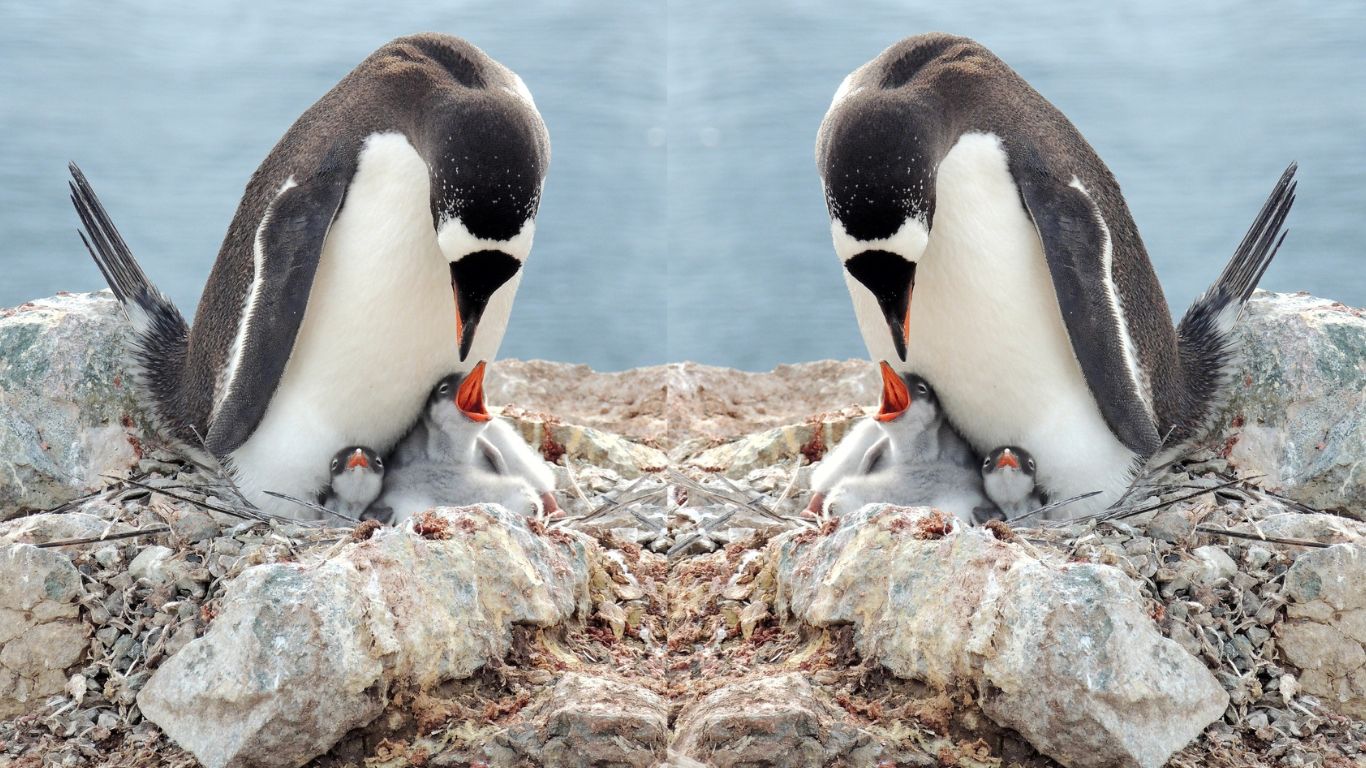
Adaptations that enable penguins to hunt underwater
Penguins have evolved various adaptations that enable them to excel as underwater hunters:
1. Streamlined Body: Their torpedo-shaped bodies minimize drag and allow for efficient swimming and maneuverability underwater.
2. Webbed Feet: Penguins have webbed feet that act as efficient paddles, aiding in propulsion and steering during underwater pursuits.
3. Layered Feathers: Penguins possess a dense layer of waterproof feathers that help insulate them from the cold water while reducing friction during swimming.
4. Enhanced Vision: Their eyes are adapted to vision both in air and water, allowing them to spot prey and navigate effectively underwater.
5. Buoyancy Control: Penguins have air sacs and dense bones that assist in buoyancy control, enabling them to dive and resurface effortlessly.
6. Reduced Air Consumption: Penguins can conserve air by shutting off circulation to non-essential body parts, redirecting oxygen to vital organs during extended dives.
These adaptations collectively equip penguins with the necessary tools to thrive in their underwater hunting expeditions, making them formidable predators in their marine habitats.
Types of Food Consumed by Penguins
Penguins have a diverse diet that consists of various marine organisms, including krill, fish, squid, crustaceans, and other invertebrates. The specific types of food consumed by penguins can vary based on their species, geographic location, and local prey availability. Krill, small shrimp-like crustaceans, are a staple food for many penguin species, providing them with essential nutrients and energy. Penguins also feed on a wide variety of fish species, such as anchovies, sardines, and lanternfish, using their streamlined bodies and underwater agility to catch their prey. Squid and other cephalopods are occasionally part of the penguin diet, offering a source of protein and fats. Additionally, penguins consume crustaceans like crabs and shrimp, as well as other invertebrates found in their habitats. The varying food sources for penguins demonstrate their adaptability to different environments and the importance of a diverse diet for their survival.
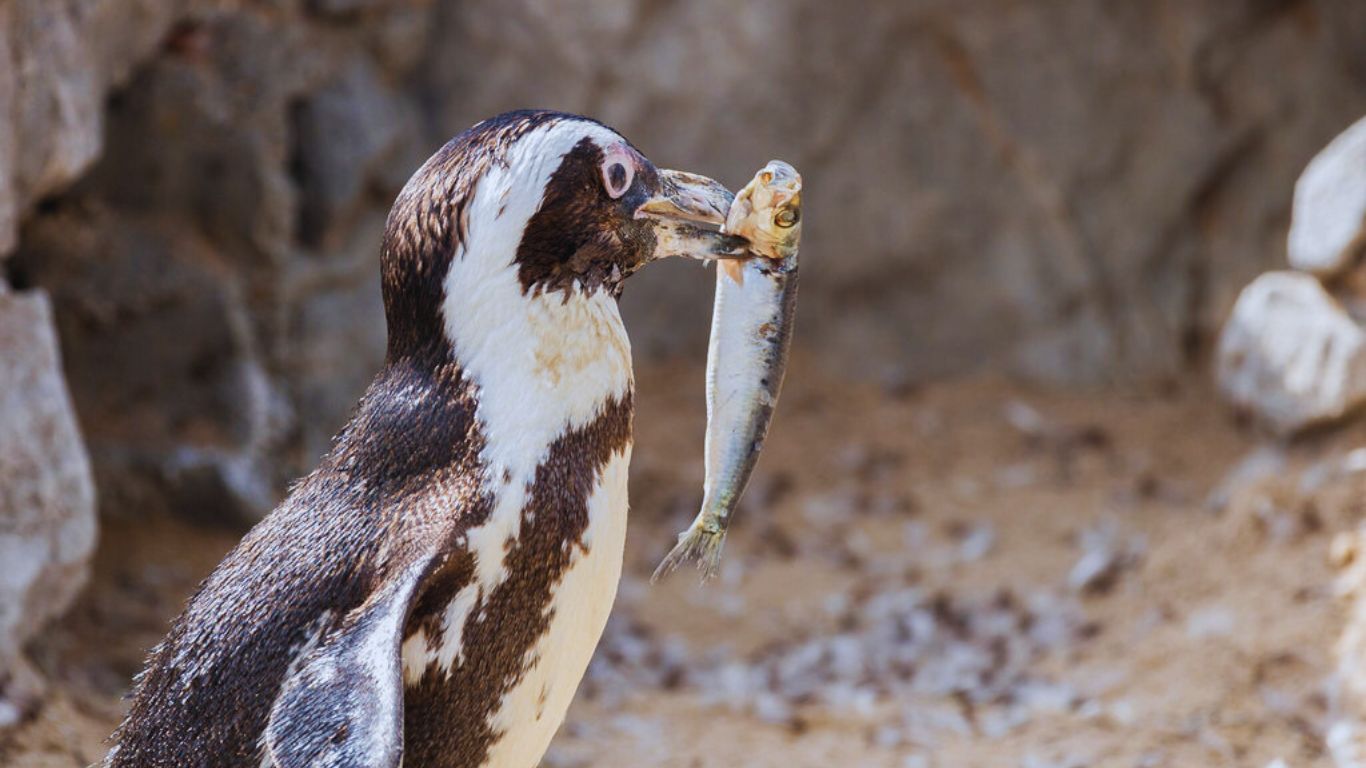
Here below are some foods that are consumed by penguins.
A. Krill
1. Description and abundance of krill
Krill are small, shrimp-like crustaceans that form a vital part of the penguin diet. They are found in large swarms in cold, nutrient-rich waters, particularly in the Southern Ocean. Krill serve as a primary food source for many penguin species due to their abundance and nutritional value.
2. Role of krill in penguin diet
Krill are rich in proteins and fats, providing penguins with the energy needed for their demanding lifestyles. Penguins, especially species like Adelie and Chinstrap penguins, heavily rely on krill as a primary food source. They can consume large quantities of krill, often hunting in groups to efficiently gather their prey.
3. Krill fishing techniques employed by penguins
Penguins employ various hunting techniques to capture krill. They swim beneath the krill swarms and use their flippers to create a “bubble net” by releasing air bubbles while diving. This net traps the krill, making it easier for penguins to catch them in their beaks. They also use their specialized filtering beaks to separate the krill from the water, swallowing them whole.
4. Krill and the Antarctic food web
Krill not only serve as a crucial food source for penguins but also play a vital role in the Antarctic food web. Many other marine animals, such as seals, whales, and seabirds, rely on krill as a primary food source. Thus, the availability and abundance of krill have far-reaching impacts on the overall health and stability of the Antarctic ecosystem.
Krill forms a significant part of the diet for several penguin species, showcasing their adaptation to capitalize on the abundant resources provided by these small crustaceans.
B. Fish
1. Various fish species consumed by penguins
Penguins are skilled fish hunters and have been known to consume a variety of fish species. Some common fish species consumed by penguins include anchovies, sardines, herrings, lanternfish, and silverfish. The specific fish species in their diet can vary based on the penguin species and the availability of fish in their habitats.
2. Fishing techniques employed by penguins
Penguins employ different fishing techniques to catch fish efficiently. They primarily hunt while underwater, using their streamlined bodies and powerful flippers to propel themselves through the water. Penguins are agile swimmers and can dive to considerable depths in pursuit of their prey. Once underwater, they rely on their keen eyesight to spot fish and then use their exceptional swimming skills to chase and capture them. Penguins catch fish by snapping them up in their sharp beaks, often swallowing them whole. Some penguin species, such as the Emperor penguin, can even dive to incredible depths, reaching several hundred meters in search of fish.
Fish form a significant part of the penguin diet and are an important source of nutrients and energy for these aquatic birds. The fishing techniques employed by penguins showcase their remarkable adaptations for capturing fish in their marine environments.

C. Squid and other Cephalopods
Squid holds significant importance in the diet of many penguin species. These cephalopods are a valuable food source due to their high protein content and energy density. Squid provide essential nutrients, including amino acids and fatty acids, which are vital for the growth, development, and overall health of penguins.
D. Crustaceans and other Invertebrates
Crustaceans are a significant component of the penguin diet, providing a source of protein and nutrients. Penguins consume various types of crustaceans, including crabs, shrimp, and krill. These small marine organisms are abundant in many penguin habitats, particularly in cold, nutrient-rich waters. Penguins use their beaks to capture and consume crustaceans, either by snapping them up whole or breaking them into smaller pieces.
Geographic Variations in Penguin Diet
Understanding the geographic variations in penguin diet is crucial for comprehending the specific ecological requirements of different species and the potential impacts of environmental changes on their food sources. It highlights the adaptability of penguins to different habitats and emphasizes the importance of considering local ecosystems and environmental factors when studying and conserving these fascinating birds.
A. Differences in diet among penguin species
Penguins exhibit variations in their diets based on their species and geographic locations. Different penguin species have evolved to inhabit diverse environments and adapt to different ecological niches. Consequently, their dietary preferences and requirements can vary. For example, Antarctic penguins, such as Adelie and Chinstrap penguins, predominantly feed on krill and fish due to the abundant availability of these resources in the Southern Ocean. In contrast, penguins in more temperate regions, like the Galapagos penguin, may have a diet that includes a higher proportion of fish and other marine invertebrates found in their local waters. The differences in the availability and accessibility of prey items contribute to the varying diets observed among penguin species.
B. Impact of location and environmental conditions on available food sources
The geographical location of penguins plays a significant role in shaping their diet. Penguins residing in regions with colder waters, such as the Antarctic or subantarctic, often rely heavily on krill and fish that thrive in these nutrient-rich environments. In contrast, penguins living in warmer waters may have a more diverse diet that includes a broader range of fish species, crustaceans, and other marine invertebrates found in their respective habitats.
Environmental conditions, such as sea surface temperature, currents, and seasonal variations, also impact the availability and distribution of prey species. Changes in oceanographic conditions can influence the productivity of the marine ecosystem, affecting the abundance and availability of specific food sources for penguins. Climate change, for instance, can alter the distribution and abundance of prey species, potentially impacting penguin populations and their diets.
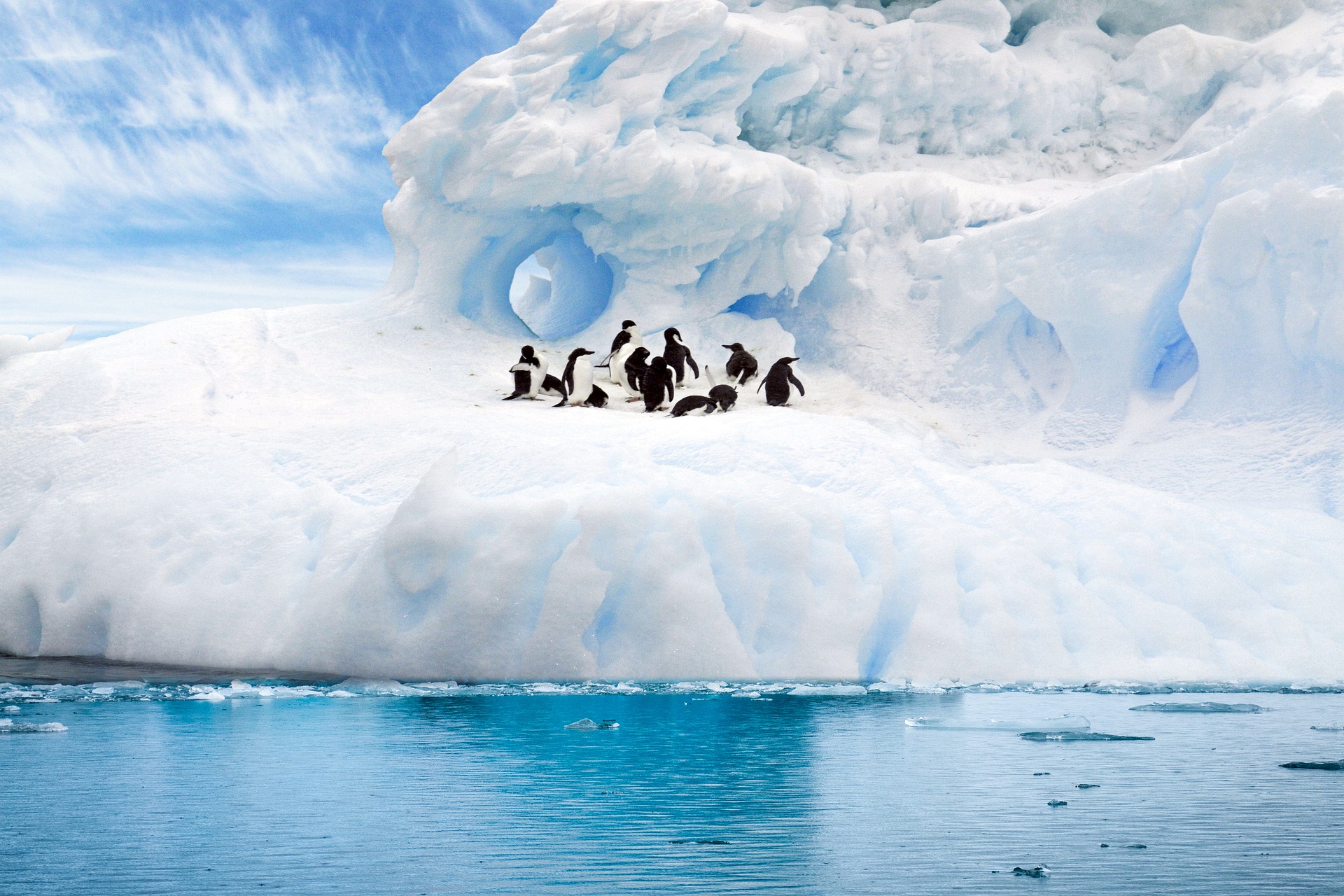
Factors Influencing Penguin Feeding Behavior
Understanding the factors that influence penguin feeding behavior is essential for assessing their ecological role, predicting their response to environmental changes, and developing effective conservation strategies to protect their food sources and habitats.
1. Prey availability and distribution
The availability and distribution of prey species play a crucial role in shaping penguin feeding behavior. Penguins are highly dependent on the abundance of their preferred food sources, such as krill, fish, and other marine organisms. Changes in oceanographic conditions, including nutrient levels and currents, can affect the availability and spatial distribution of prey, impacting the foraging patterns and feeding success of penguins.
2. Seasonal variations in food sources
Seasonal variations in food sources can significantly influence penguin feeding behavior. Many penguin species breed during specific times of the year when they require increased energy and nutrients. The timing of prey availability is crucial for penguins to adequately provision themselves and their chicks. For example, in the Antarctic, where seasonal sea ice plays a significant role, penguins time their breeding cycles to coincide with the peak abundance of krill, ensuring a sufficient food supply for their offspring.
3. Competition with other marine predators
Penguins often face competition with other marine predators for limited food resources. They share their foraging habitats with other species, including seals, seabirds, and marine mammals, which may compete for similar prey items. The presence of competitors can influence penguin feeding behavior, as they may need to adapt their hunting strategies, dive depths, or search for alternative prey species to mitigate competition and secure their food supply.
D. Impact of climate change on penguin diet
Climate change can have profound effects on the distribution and abundance of prey species, ultimately impacting penguin diet. Changing ocean temperatures, altered ocean currents, and shifts in prey populations can disrupt the availability and accessibility of preferred food sources for penguins. For example, warming waters in some regions may lead to changes in the composition of plankton communities, affecting the primary food source for krill and subsequently impacting penguins that rely on krill as a mainstay of their diet. Climate change can also result in shifts in the timing of seasonal events, potentially causing mismatches between penguin breeding cycles and the availability of food resources.
Feeding Strategies and Techniques
Diving deep, hunting cooperatively, or providing parental care, penguins have evolved a range of feeding behaviors that contribute to their survival and reproductive success.
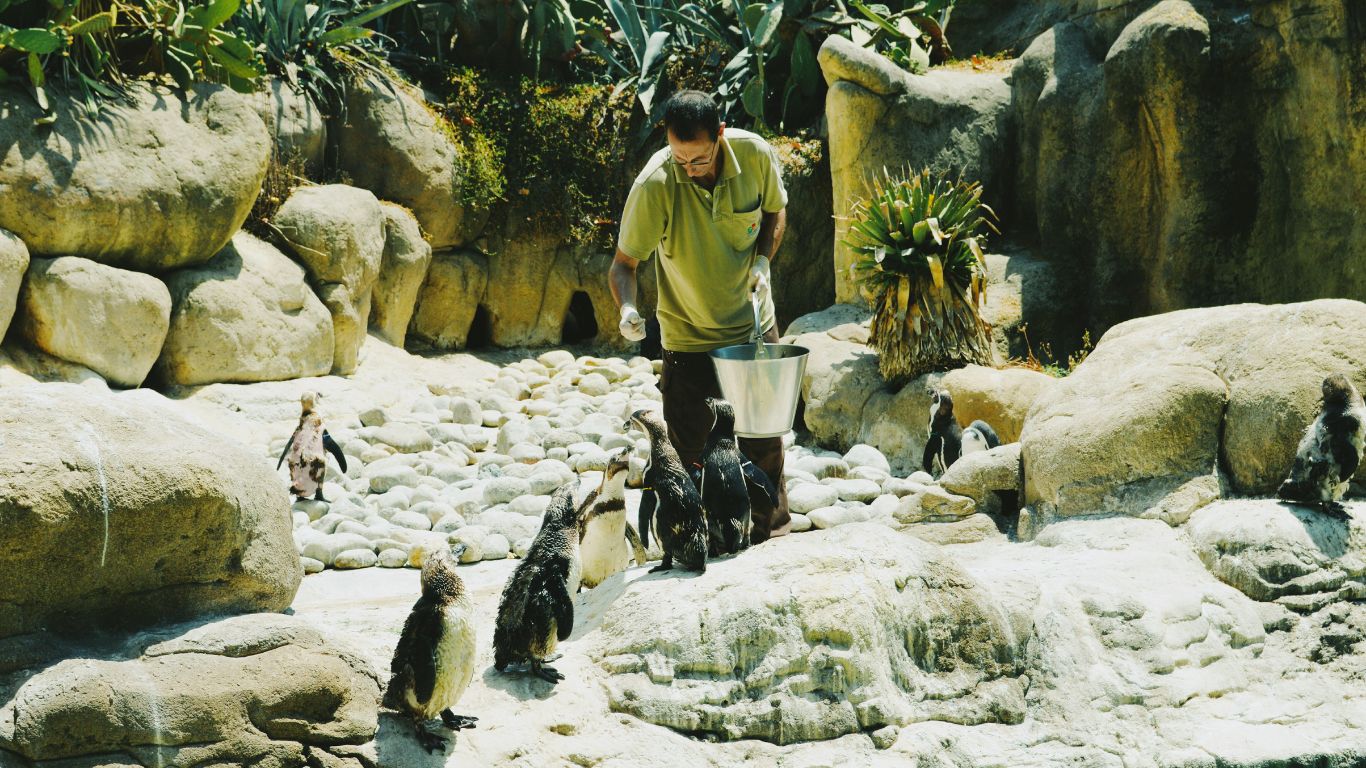
Here below are some penguin’s feeding strategies and techniques.
1. Diving behavior and hunting techniques
Penguins have developed remarkable diving abilities and employ various hunting techniques to capture their prey underwater. They can dive to impressive depths and remain submerged for extended periods. Penguins use their streamlined bodies and powerful flippers to propel themselves through the water, chasing after fish, squid, and other prey. They rely on their excellent vision to locate and pursue their targets. Penguins may also use techniques like “porpoising,” where they leap out of the water while swimming, to catch prey near the surface.
2. Foraging in groups or individually
Penguins exhibit both solitary and cooperative foraging behaviors, depending on the species and the availability of prey. Some penguin species engage in group foraging, forming “rafts” or “pods” where individuals swim and hunt together. Group foraging can help penguins increase their chances of capturing prey, as they can work together to create a surround-and-capture effect. Other penguin species may forage individually, diving and hunting on their own to locate and catch prey.
3. Parental feeding and regurgitation for chicks
Parental care is crucial for penguins, and feeding their chicks is an essential part of the breeding process. Adult penguins regurgitate food from their stomachs to feed their chicks. They gather and store food in their stomachs while foraging, and upon returning to the nest, they regurgitate the partially digested food into the chick’s mouth. This process ensures that the chicks receive a nutrient-rich diet for their growth and development.
These feeding strategies and techniques demonstrate the adaptability and resourcefulness of penguins as they navigate their marine environments and secure their food supply.
Conservation and Research Efforts
Conservation and research efforts are vital for safeguarding penguin populations and maintaining the availability of their food sources. By addressing threats, studying their diet, and implementing conservation measures, we can work towards preserving these remarkable birds and the delicate ecosystems they inhabit.
1. Threats to penguin populations and their food sources
Penguins face various threats that can impact their populations and the availability of their food sources. Climate change, including rising sea temperatures and changes in ocean currents, can disrupt the distribution and abundance of prey species, leading to food scarcity for penguins. Overfishing and unsustainable fishing practices can deplete fish stocks, reducing the availability of prey for penguins. Pollution, habitat degradation, and human disturbance in penguin breeding colonies and foraging areas also pose threats to their populations and food sources.
2. Studying penguin diet to assess ecosystem health
Researching and understanding the diet of penguins is crucial for assessing the health of their ecosystems. By studying the composition of their diet, scientists can monitor changes in prey availability and assess the overall status of the marine food web. Monitoring penguin diet provides insights into the impacts of environmental changes, overfishing, and other threats on their food sources and can help guide conservation efforts and ecosystem management strategies.
3. Conservation measures to protect penguin habitats and food availability
Conservation efforts aimed at protecting penguins and their food sources focus on preserving their habitats, mitigating human impacts, and promoting sustainable fishing practices. This includes the establishment and management of marine protected areas that safeguard critical foraging grounds and breeding colonies. Conservation organizations and governments work to reduce pollution and minimize disturbance in penguin habitats. Additionally, initiatives are implemented to promote responsible fishing practices that avoid overexploitation of fish stocks and protect the prey species on which penguins rely.
Public awareness campaigns and education programs are also essential to engage local communities and raise awareness about the importance of penguins and their ecosystems. By promoting sustainable practices and responsible tourism, efforts can be made to minimize the impacts of human activities on penguins and their food availability.
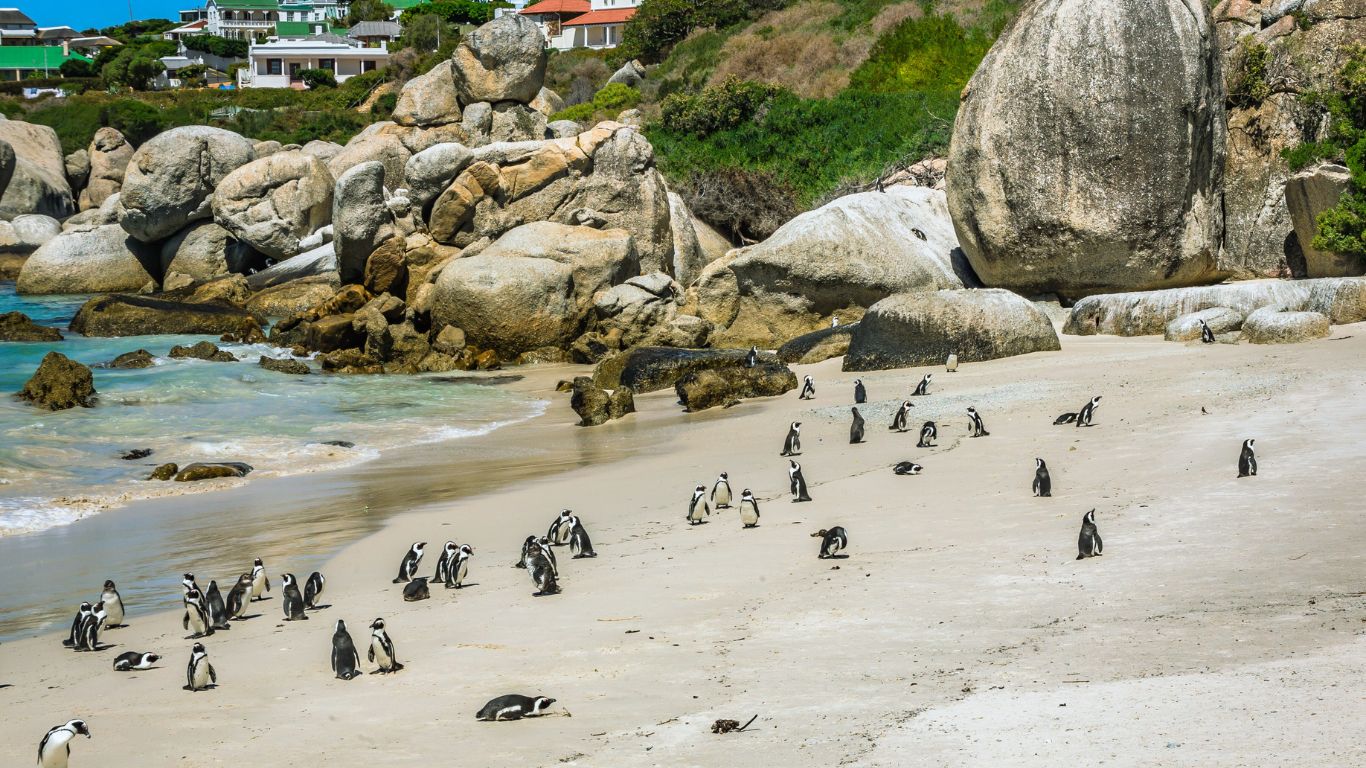
Conclusion
In conclusion, penguins have a diverse diet that includes krill, fish, squid, crustaceans, and other invertebrates. Their feeding habits and adaptations enable them to hunt underwater, utilizing techniques such as diving, chasing, and capturing prey with their beaks. Geographic variations in their diet occur due to differences in prey availability and distribution, while factors like seasonal variations, competition with other marine predators, and climate change also influence their feeding behavior.
Understanding the various components of penguin diet is essential for assessing their ecological roles and the health of their ecosystems. Ongoing research and monitoring of penguin diet provide insights into the impacts of environmental changes and human activities on their food sources. By studying their diet, scientists can assess the health of marine food webs and implement conservation measures to protect penguins and their habitats.
Conservation efforts play a vital role in safeguarding penguin populations and their food availability. Protecting their habitats, mitigating threats such as pollution and habitat degradation, and promoting sustainable fishing practices are key conservation measures. Public awareness and education programs also contribute to the preservation of penguins and their ecosystems.
Continued research and conservation efforts are of paramount importance to ensure the long-term survival of penguins and the maintenance of their diverse diet. By protecting these charismatic birds and their food sources, we not only preserve the ecological balance of our oceans but also contribute to the overall health and sustainability of our planet.
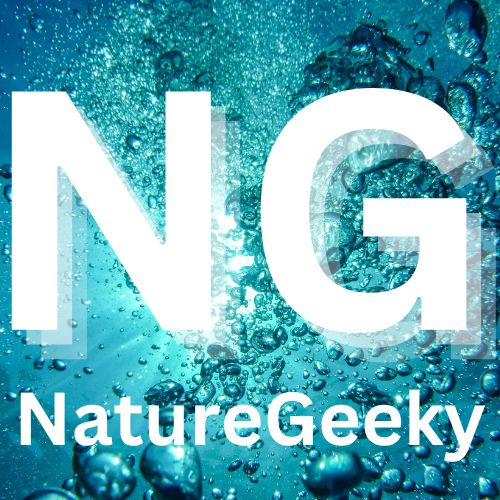
2 thoughts on “From Krill to Squid: What Do Penguins Eat ?”